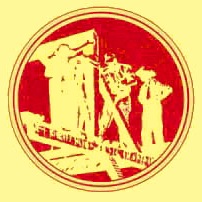For a person who has not thought very much about it, the idea of a generative sequence might seem
After all, every recipe is a sequence of steps. Is a generative sequence anything more than a series of steps like a recipe for cake or omelets.
It is.
There is one essential ingredient to the sequences, which is perhaps their most salient feature, and which is also the feature that makes them work, and which forms the foundation of the described methodology.
A sequence works, or does not work, according to the order of the steps in the sequence. Some sequences allow unfolding, others do not allow it. For a given task, the number of possible sequences is huge compared with the number of sequences which work, that is by comparison, tiny. For example, if we have 24 steps, for generating a Japanese teahouse. There are 24! (approximately 1023) different possible sequences of 24 items, billions upon billions. The number of successful sequences, or sequences which "work" for the same 24 items is very limited a few thousand at the most, which are all essentially variants of the same underlying sequence. In short, there are less than .00000001 percent of all possible sequences, which work.
It is not possible, at present, to give a precisely defined way of identifying the sequences which work. That is to say, we do not yet know a mathematical procedure which can identify the sequences which work. However, the sequences which work can be identified , experimentally, by a fairly well defined procedure. If one applies a sequence of steps to a given context, and if one then observes the unfolding process, it is possible to ascertain, unambiguously, whether the process engendered by this sequence at any time contradicts itself. That means, we ask whether one is forced to backtrack, because step B which comes at a certain point in the sequences forces one to undo the results of a previously taken step A.
In this way, by doing experiments on test cases, it is possible to winnow out or correct sequences, and essentially to eliminate all the bad ones, thus gradually finding ones way to the good sequences, which have the property that no such backtracking occurs as a project unfolds.
This property of being backtrack-free is the essence of what makes a successful sequence.
It is very important to note that, for a given set of steps, such a backtrack-free sequence is stable. Once discovered, the property of being backtrack-free stays, and it is true for all contexts. Thus the backtrack-free sequences are the essence of the theory of unfolding. Since the identification of backtrack-free sequences can be made, experimentally, the property is objective and is unambiguously defined by experiment (even though difficult to find, experimentally).
The described methodology incorporates the idea that such backtrack-free sequences exist, and includes all the particular realizations of backtrack-free sequences for providing widespread user participation in the planning design and construction of the built environment. The sequences can be made available within the context of a business model that uses the internet for wide dissemination and a combination of sequences, together with word based questions and probes which bring user input into the end product with a supporting imaging and design tool software. The generative sequences can be combined with online tools which make it possible for the user to create the design dynamically, step-by-step.
The business model can also provide for ancillary project management, and access to local professionals who provide help, management, craft and construction for a community, company or individual who has used the sequences to lay out their own design.
This approach and business method is fundamentally different from previous attempts to plan, design and construct buildings. The present methodology provides for user participation in the planning design and construction of the built environment in a manner which allows the organic growth of a design through a sequence of generative steps.
Continue on to use Sequences to help you build your project:

